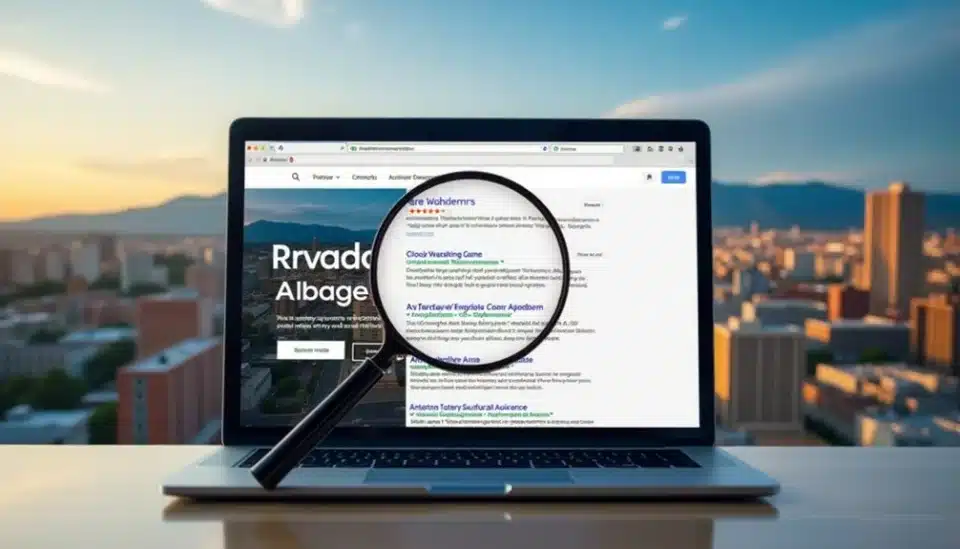Think of your ideal customer as a needle in a haystack; finding them amidst the vastness of Facebook requires precision and strategy. You've got the tools at your disposal, but knowing how to wield them can make all the difference in your e-commerce success. By honing in on your audience's behaviors and preferences, you can tailor your ads to resonate deeply. Yet, the real question remains: what specific targeting techniques will truly elevate your campaigns and drive conversions?
Key Takeaways
- Develop detailed customer personas through market research to understand your target audience effectively.
- Utilize custom and lookalike audiences to maximize ad reach and engagement by targeting specific user groups.
- Segment audiences based on demographics, behaviors, and interests to tailor ad messaging for higher conversion rates.
- Implement retargeting strategies, like dynamic ads and abandoned cart reminders, to recapture potential customers.
- Conduct A/B testing to optimize ad creatives and strategies, ensuring continuous improvement and maximized ROI.
Understanding Your Target Audience
How well do you really know your target audience? Understanding your audience isn't just important; it's crucial for effective Facebook Ads targeting.
Start by developing detailed customer personas based on thorough market research. This involves audience segmentation that highlights distinct groups within your potential customers.
By diving into the buyer journey, you can tailor your messaging to meet your audience at each stage—awareness, consideration, and decision-making.
Utilize psychographic profiling to uncover their interests, values, and behaviors, which will refine your approach further.
Data analysis plays a key role here; it helps you identify patterns and trends that inform your strategies.
Don't overlook social listening—monitor conversations on social media to gauge sentiment and preferences.
Utilizing Custom Audiences
Custom audiences serve as a powerful tool for e-commerce businesses looking to maximize their Facebook Ads' effectiveness. By leveraging custom audience segmentation, you can reach specific groups of users who've already interacted with your brand, whether they've visited your website, made a purchase, or engaged with your content. This focused approach allows you to tailor your messaging to resonate with these potential customers, ultimately increasing your conversion rates.
Utilizing custom audiences also enables you to analyze audience engagement metrics effectively. You can track how well your ads perform among different segments, providing you with valuable insights into which strategies yield the best results. For instance, if you notice a higher engagement rate among users who previously abandoned their shopping carts, you can create targeted ads to recapture their interest.
Moreover, by continuously refining your custom audience segments based on real-time data, you can enhance your ad spend efficiency. This means you're not just throwing money at broad audiences but strategically investing in those most likely to convert.
In short, custom audiences empower you to optimize your Facebook Ads for better engagement and increased sales.
Leveraging Lookalike Audiences
By tapping into lookalike audiences, you can significantly expand your reach on Facebook while targeting users who share similar characteristics with your best customers. This strategy leverages Facebook's powerful audience segmentation capabilities, allowing you to identify potential customers who are likely to engage with your brand.
When you create a lookalike audience, Facebook analyzes your existing customer data to find users with comparable demographics, interests, and behaviors.
The key to successful campaign optimization lies in selecting the right source audience. Ideally, use a custom audience of your highest-value customers or those who've made recent purchases. This ensures that the lookalike audience you create is based on data from users who already convert.
Remember, the closer the match between your source audience and the lookalike audience, the higher your chances of success.
Moreover, continually monitor your ad performance to fine-tune your targeting. Testing different audience sizes can reveal which group delivers the best results.
Demographic Targeting Techniques
When targeting potential customers on Facebook, understanding and utilizing demographic targeting techniques can significantly enhance your advertising effectiveness.
By analyzing age groups, you can tailor your ads to resonate with specific segments, whether it's millennials or seniors. Gender preferences also play a crucial role; for instance, certain products may appeal more to women than men, allowing you to adjust your messaging accordingly.
Income levels can indicate purchasing power, so consider targeting users based on their income brackets. Location specifics allow you to address regional trends and needs, ensuring your ads reach the right audience.
Education backgrounds can help you connect with customers seeking products tied to their academic interests or professional fields. Marital status is another key factor; couples might be more inclined to purchase home goods, while singles might lean towards lifestyle products.
Additionally, occupation types can inform your ad strategy, as certain professions may have unique needs or interests. Lastly, understanding lifestyle choices—such as fitness enthusiasts or tech-savvy individuals—enables you to craft highly relevant campaigns.
Behavioral and Interest Targeting
Effective behavioral and interest targeting can dramatically boost your Facebook ad campaigns. By leveraging behavioral segmentation, you can identify and reach users based on their online actions and purchasing behaviors. This approach ensures that your ads resonate with individuals who are more likely to convert, increasing your return on ad spend.
Interest mapping is another powerful tool that allows you to connect with potential customers based on their specific interests and hobbies. By analyzing user interactions, you can tailor your messaging and creative to align with what your target audience values. For instance, if you sell fitness apparel, targeting users who engage with fitness pages or participate in health-related groups can lead to higher engagement rates.
Data shows that campaigns utilizing behavioral and interest targeting can outperform standard demographic targeting by up to 60%. This means that by focusing on the behavior and interests of your audience, you're not just wasting ad spend on a broad audience but rather honing in on those who are genuinely interested in what you offer.
In a competitive e-commerce landscape, this precision can be the difference between a successful campaign and a missed opportunity.
Retargeting Strategies for E-Commerce
How can you turn window shoppers into loyal customers? Retargeting strategies are your key. By leveraging dynamic ads, you can showcase products that visitors viewed but didn't purchase, tapping into their purchase intent. These ads adapt based on user behavior, making them highly effective at different funnel stages.
Start by setting up conversion tracking to monitor actions taken on your site. This data allows you to create tailored ad creatives that resonate with your remarketing audiences. For instance, if someone abandoned their cart, you can remind them of those items with a compelling offer.
Be mindful of ad frequency; too many impressions can lead to ad fatigue. Balancing your retargeting efforts ensures your audience remains engaged without feeling overwhelmed.
Segment your audiences based on their position in the customer journey, so you can deliver the right message at the right time.
Utilizing these strategies, you not only remind potential customers of what they're missing but also guide them back towards conversion. Make your ads relevant, and watch as those window shoppers turn into loyal customers.
A/B Testing for Optimization
A/B testing serves as a crucial tool for optimizing your Facebook ads, allowing you to make data-driven decisions that enhance performance. By testing different variations of your ad creative—be it images, headlines, or calls to action—you can pinpoint what resonates best with your audience. This process not only improves engagement but also drives conversions, ultimately maximizing your return on investment.
When implementing A/B testing, start by defining clear hypotheses. For example, if you believe that a specific image will generate more clicks, create two ads: one with that image and another with a different one. Monitor the results closely, paying attention to metrics like click-through rates and conversion rates.
Furthermore, effective budget allocation is key. Distribute your budget evenly across the ads initially, then funnel more funds into the higher-performing variations. This ensures you're not wasting resources on underperforming ads and helps you scale successful strategies quickly.
Incorporating A/B testing into your Facebook ad strategy allows you to continually refine your approach, ensuring you reach your ideal customers with the most compelling content possible.
Conclusion
Incorporating these Facebook Ads targeting strategies can significantly enhance your e-commerce success. You might think that fine-tuning your audience takes too much time, but investing in this process pays off—studies show targeted ads can boost conversion rates by up to 200%. By understanding your audience, utilizing custom and lookalike audiences, and continually optimizing your campaigns, you'll reach your ideal customers more effectively. Don't miss out on the potential for increased sales and brand loyalty; start refining your strategy today.

